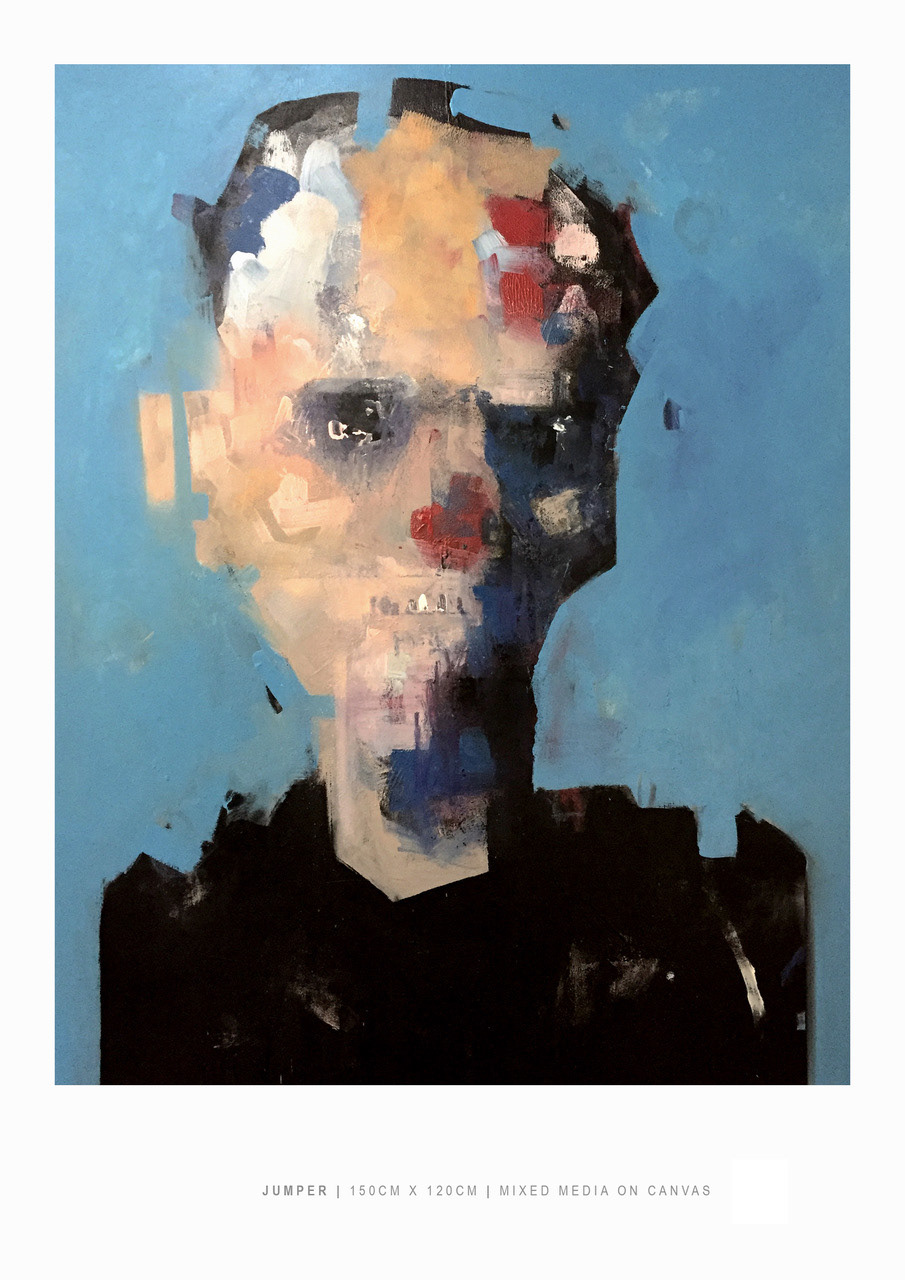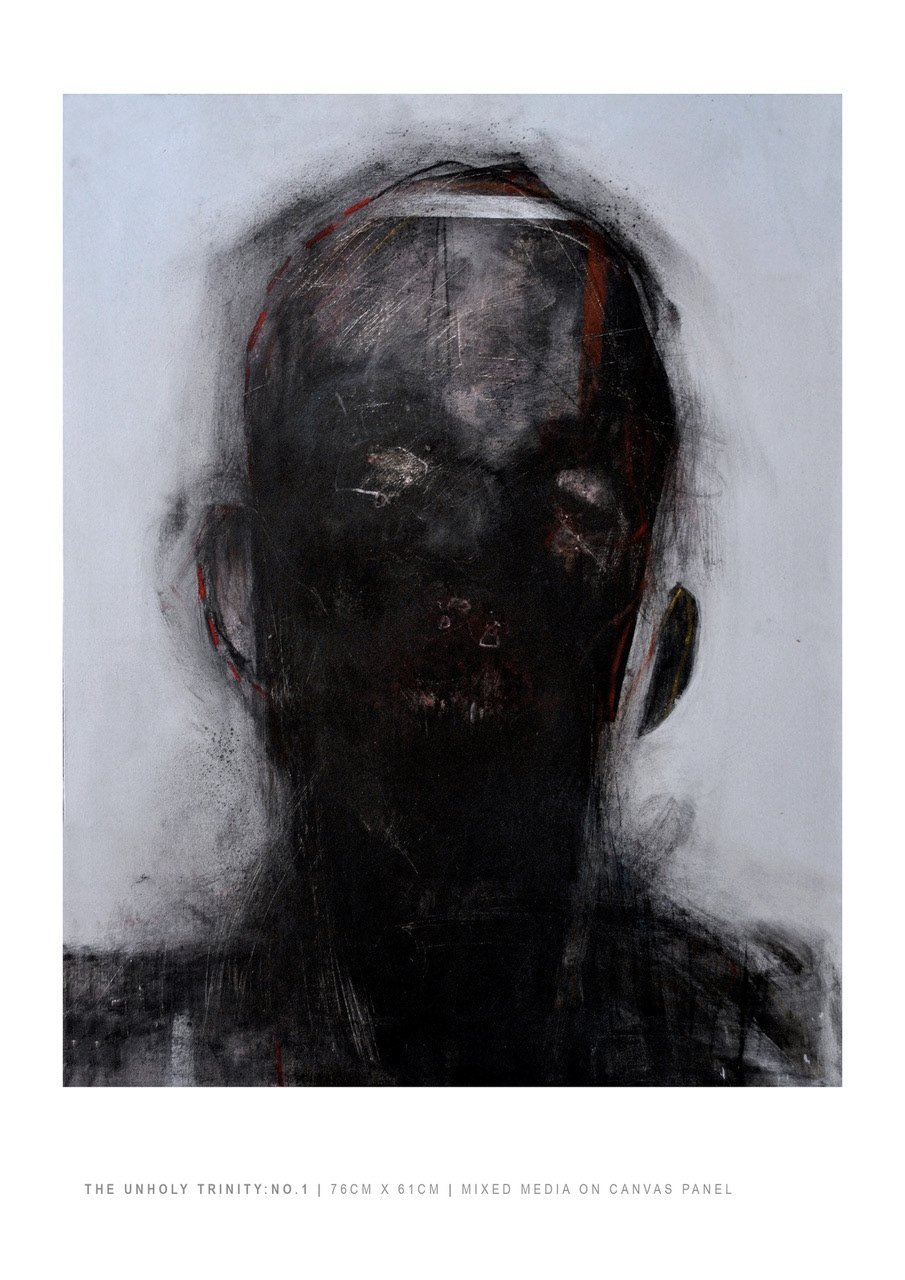_______________________________
ITA - ENG
MAY 2020
Schalk van der Merwe is a South African artist. His Visceral portraits are not born from a cognitive process but are the sensitive and emotional expression that seeks the truth represented on canvas or paper with different materials each time.
Website: www.svdmstudio.com
All images © courtesy of Schalk van Der Merwe
_________________________________________
I am very interested about the thought behind the choice of titles, for example Visceral is a word that comes back very often not only in the titles but also in the declarations can you talk about it?
The word “Visceral” is extremely important to me and my process. The word itself, refers to “relating to deep inward feelings rather than intellect”. This guttural, raw feeling, is where my work stems from. With every painting I try and discover and unleash some truth or emotion. These emotions can range from extreme happiness to utter despair. Ultimately, I’m just the vessel. The paintings have always been there, lying dormant, just waiting to be revealed on my canvas.
There is a deep sense of empathy, a strong emotional charge that arises from observing your paintings including the subjects are portrayed in such a way as to almost not recognize the features. Do you think this is one of the reasons why the public feels so emotionally impressed by your works? is it as if he saw himself in those portraits?
Likeness or recognition has never been important to me. My artworks don’t rely on race, culture, religion or sex. I think this ambiguity makes my work more accessible to everyone. I paint emotions, not portraits. When you look at a painting of a landscape or still life, you always feeling like an observer, a silent witness. With my portraits, there’s a certain level of engagement, especially if the subject is staring back at you. I feel we can all see parts of ourselves in portraits. They become a mirror to our own life.


I read in your statements is not born of a cognitive process and I wonder what the process is actually behind it? How are your paintings born? Are they episodes, moments that inspire you, people?
I think about my work a lot, but when I get into my studio and start engaging with the materials and canvas, it’s all about trust and surrendering to the process. I just paint. I don’t think while physically making marks on the canvas or paper. I react to the music playing, the light in my space, my emotional state and the materials. Over-thinking can sometimes destroy the creative process. These images come to me like fleeting ghosts. I never know what will be revealed. Every painting is a discovery to me.
How much do you think your art has changed compared to its origins. Is there any particular idea that you would like to develop in the future?
Technically my work has evolved a lot. The essence of my work has always been about truthful expression. No matter how uncomfortable it might be to express or witness as the viewer. Growing up in apartheid South Africa, I was surrounded by lies and misinformation. These circumstances, have compelled me to always seek my Truth.
Are there any contemporary artists whose work attract you?
Jenny Saville, Antony Micallef, Mary Sibande, Andrew Salgado, William Kentridge, Michael Reeder, Mothmeister, Johan van Mullem, Jeremy Geddes, Jake Wood Evans, Emile Melmoth.
Are there any artists you feel inspired in your career? I'm not just talking about the field closely related to painting, in the 90's you sang in a series of independent bands, so maybe even in the music field.
Art and music have always been in essential part of my life. From Francis Bacon, Salvador Dali, Goya, Rembrandt, Vinyl sleeve cover art, Pierneef to Abba, Kiss, Tool, The Doors, Pink Floyd, Miles Davis, Elvis and Arctic Monkeys, to mentioned a few. To me, music and art should not be labelled and put into boxes. They should just be experienced and enjoyed, unconditionally, for what they are.


I find the choice of colors in your portraits very fascinating. The prevailing black and white are lashed by bright colors such as red and blue. Do you think there is a parallelism between this contrast created by colors and the contrast that the observer feels in being attracted to faces that show a sense of sadness and melancholy?
I literally use any material or colour within arms reach. I let my emotional state dictate the colour choices. If I can capture the relevant emotions in a painting with a monochromatic palette, then that’s what the painting will look like. My colour choices are not premeditated, they evolve along with the painting. Sometimes, less, really is more.
You work a lot between the United States and England; how important is it for a contemporary artist to work outside his own country?
Ten years ago, it was definitely more difficult to get your work into the global art market. With the huge boom of the digital age, everything has changed. So many incredible platforms have opened up and allow artists to showcase their work globally. If used correctly and selectively, any artist can now get their art into top galleries, art fairs and private collections. The days of waiting to be discovered are long gone. Getting your work in front of international audiences is essential. Not only will you learn a lot about the art industry, but it will give you incredible insights into your own work.
Do you have any new future plans you are working on?
Too many. The first priority is to expand my studio space. A larger studio will allow me the freedom to create even bigger works and start exploring different mediums like sculpture and installation pieces. Watch this space.
